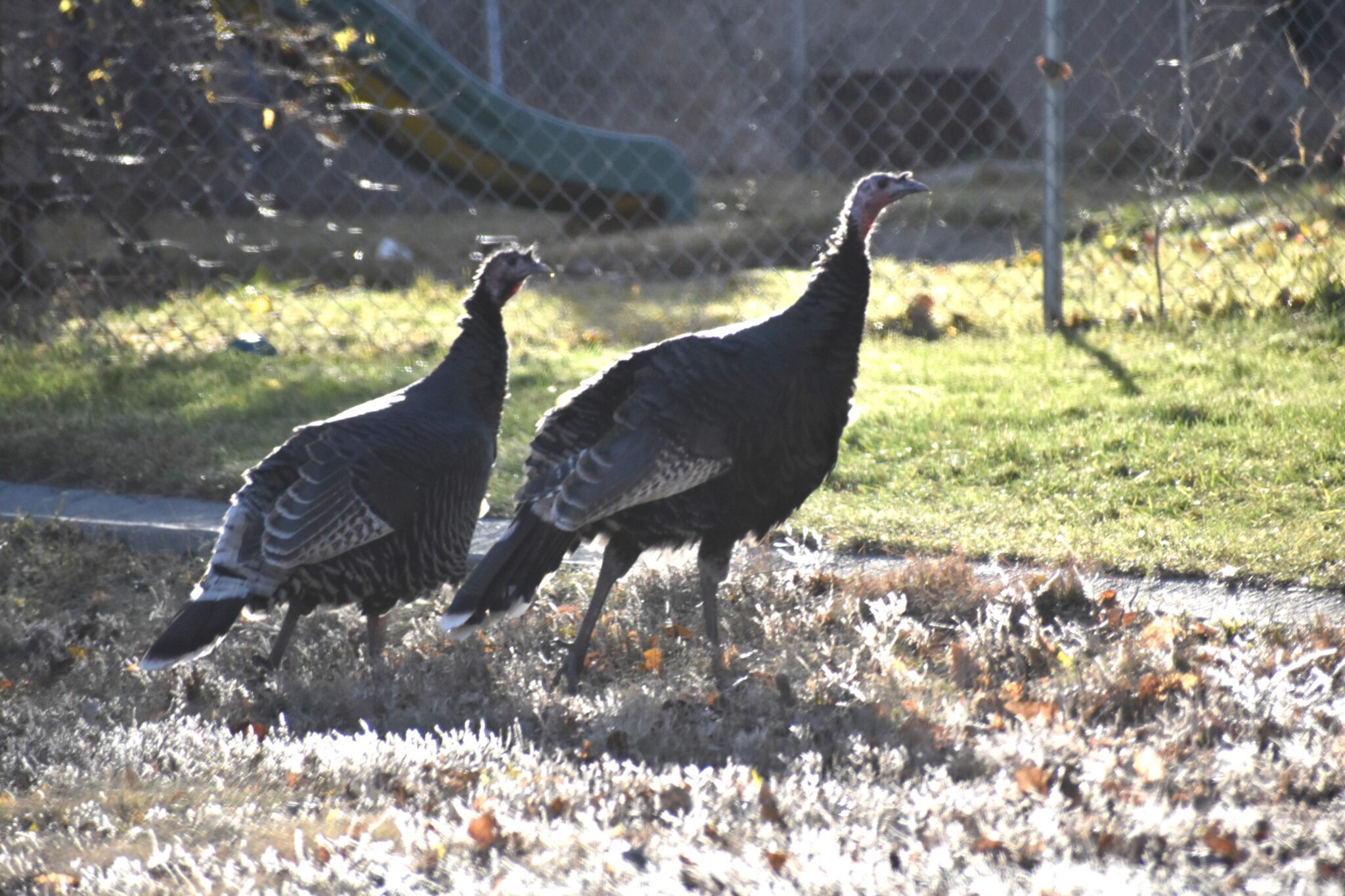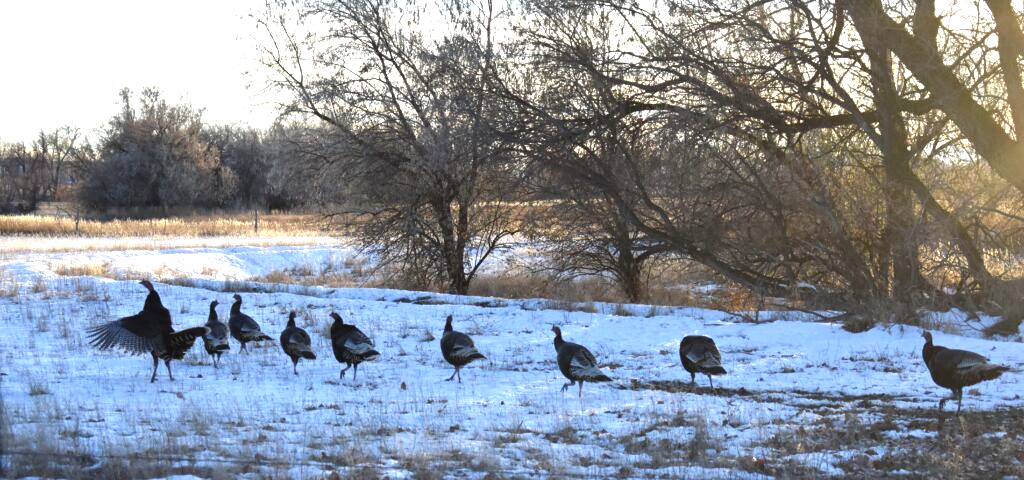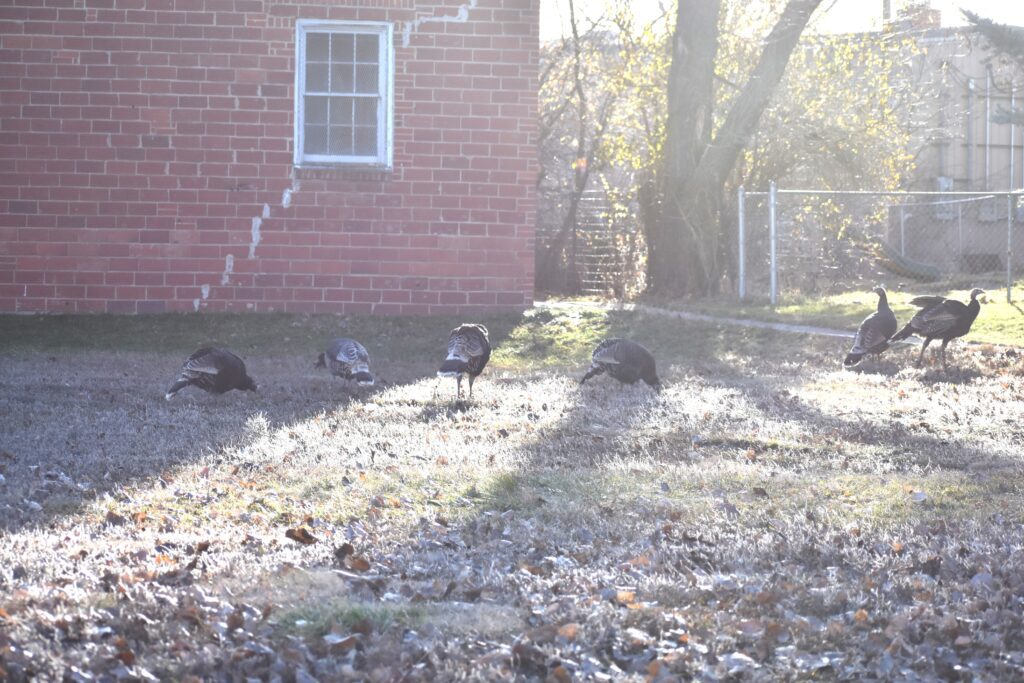News
The Turkey is an American Original

Thanksgiving is not only an American Holiday; other countries celebrate it as well, but it is one of the most popular holidays in the United States with 79% of Americans saying that Thanksgiving is their favorite holiday, Christmas is a close second with 78%.

The center of the Thanksgiving celebrations is the feast. Although some families cook a beef roast, duck, ham or a prime rib for Thanksgiving, the traditional turkey still graces most people’s Thanksgiving tables in the United States. In fact, nearly 90% of those having Thanksgiving meals purchase turkey as the main course.
But why the turkey? Why not ham, or beef or pork? It can be a matter of tradition. In 1621, turkeys and other wildfowl were abundant. This from a longer story in the Wind River Mountaineer Lander, Fremont County, Wyoming November 21, 1913 – ….On December 11, 1621, Edward Winslow wrote home to England the following very quaint account of the week’s program: “Our harvest being gotten In. our governor sent four men out fowling so we might in a special manner rejoice together after we had gathered the fruits of our labors. The four killed so much fowl that with a little help served the company about a week. Among other recreations were exercises with our arms….’.
For another thing, the wild turkey truly an American original. As we see in the story in the Wind River Mountaineer, November 19, 1915, – The Turkey is Truly an American Bird. It existed on this continent with the Indians before Columbus landed. Only a few years ago among the caves of Arizona the mummified remains of a turkey were found. Practically every cave once occupied by the cliff dwellers of that region contained the bones or feathers of the turkey, but this specimen is intact. Its age is a matter of speculation among the scientists of the National Museum, where the specimen is on exhibition. Another interesting fact in this same connection resulted from a scientific expedition which Dr. C. Hart Merriam made among the mountains of Arizona; he came across a living species of bird identical with the one found mummified and which is now known to the scientific world by his name.
In fact, the wild turkeys in Wyoming are Merriam Turkeys. In 1935, the Wyoming Game and Fish introduced 15 wild turkeys to the state, which came from New Mexico. Today, Wyoming is one of the top five states in the nation where Merriam turkeys can be hunted.

Turkey hunting is very popular sport in the United States, with many hunters trying for the “Turkey Grand Slam,” by shooting and registering with the National Wild Turkey Federation one of each of the five wild turkey subspecies, Eastern, (East Coast and Midwest) Rio Grande, (Southwest and Mexico) Merriam’s, (western United States) and Osceola (Florida) turkeys. A Gould’s turkey can be added as well. Even more difficult and sought after is the single season slam. This can make for a great deal of traveling during the turkey hunting season.
And hunting the turkey isn’t new. – (the above quoted Wind River Mountaineer) Another recent discovery in connection with the turkey to as a Maya hieroglyphic. This piece of parchment shows a grocer’s account in which are mentioned, with other things, ten turkey hens and five turkey cocks. This is thought to be the first record of the turkey in this country and antedates the expedition of Cortes to Mexico in 1518.
But the turkey goes back farther among the Indians than even the probable date at which the specimen found in the cave existed. Among the Zuni, for instance, there exist many legends, handed down from time immemorial, which have for their-subject the turkey. The turkey plays a more important part in the life of the Indian than in bis legends alone. Not only is it regarded as a choice article of food, but in many tribes it is held sacred. In the parts of the country where the turkey was worshiped —with that curious devotion to animals which characterizes different stages in the development from savagery to civilization—it was never eaten except when other food was unobtainable. And even then separate portions were divided among various tribes, so that the religious custom would not be violated.
Turkey feathers rank next In importance to those of the eagle with ell tribes, while the Apache, the Pamunkeys and Cheyennes chose the turkey’s feathers for all ceremonial head dresses and ornaments. The Pamunkey tribe also used turkey feathers for ornamental purposes on their clothing, as well as for their bead gear. To this day. when they don their native costumes, the turkey feather is preferred as ornament.
We may be lucky that we can even hunt and eat the turkey.
If Benjamin Franklin’s words had been heeded the turkey would have been the national bird of the United States. The eagle is a first cousin to the species known of old in the eastern hemisphere.

Furthermore, it has appeared upon the banners of many nations. It was a symbol of the Roman empire. It twas known in China for ages, and today It appears upon the banners of Russia. Germany and several other nations. The turkey, however, is indigenous to America When the early European adventurers and settlers arrived they beheld great flocks of turkeys, and it soon became known that they were a favorite food among the Indians.
After a while turkeys were proudly sent home as trophies of the chase. In this way the turkey became practically a world-favorite as a food. When Cortes, in 1519. ascended to the plateau of Mexico, he found a social life developed to a high degree of refinement. He was entertained with oriental magnificence, All the delicacies to be found within the empire were set before him; and though game was abundant, the turkey held the place of honor among the fowl. This was the first time that the Spaniards had eaten turkey, and the experience proved a moat satisfying one. They also saw the great tame flocks of the birds. In fact, since prehistoric times the turkey has been domesticated and raised for market.
Today, in Mexico, many of the quaint customs then in vogue are still kept alive. And so it Is that the purchaser of today may select his choice of a fowl In the village street. Or, if he prefers, the vendor will bring it alive to his door for inspection. fresh from the farm. North of the Rio Grande the turkey was equally well known and treasured. The celebrated expedition of Coronado, between 1527 and 1547, penetrated this unexplored region west of the Mississippi. His explorations were chiefly in what is today Texas. Arizona and New Mexico, the home of the cliff-dwelling Indians of the Southwest. In all the Indian villages, according to those early explorers, turkeys were to be found, both wild and domesticated.
From America the turkey has spread to be a world favorite. But the fact that today the turkey is considered a delicacy in so many lands is due to human agencies, and not to the turkey Itself. Slow of movement and deliberate both in beginning flight and in the choice of its alighting, the turkey unaided would never have become known outside its native habitat.
Cortes, in one of his famous letters written about 1518, mentions the turkey. He carried specimens of the bird to Spain in 1520, where they came into immediate popularity, and the breeding of turkeys soon became established. It was then that the turkey became known as “pavos,” on account of his relationship to the peacock, which was then called “pavo real “—the fowl of kings.
It was a long time before the turkey reached France, as far as can be learned from history, for the first turkey eaten there was at the wed ding of Charles IX and Elizabeth of Austria. June 27, 1570, or 50 years after Spain had first tasted the bird. The turkey supplied for the wedding came from “somewhere In the American wilderness.'” Its introduction into England seems to have been in 1524.
But, whenever it was, it soon came into popular favor and was given such local names as Black Norfolk and Large Cambridge. it is an interesting fact that these descendants of the parent stock were carried back again across the Atlantic Ocean to New England, where, crossed with the original turkey already there, they began the breed that has spread from one end of the country to the other. As in this country, the turkey has come to be looked upon elsewhere as a holiday feast attraction. in the early colonial days turkeys were still abundant in Massachusetts, the rest of New England, Maryland. Virginia, the Carolinas and Florida; while in the last-named states the turkey is still found as a natural wild fowl, although in greatly decreased numbers.
Wild turkeys are a very adaptable species, and they inhabit every state except Alaska. They were even introduced to Hawaii in 1815 as a game bird. They have adapted well to small towns and cities; Sheridan and other Wyoming towns have large populations and are known as ‘urban turkeys.’

Today, turkeys are raised commercially and are much meatier than their wild ancestors. Wild turkeys, because they have to dodge predators, fly into trees to roost, and walk a lot to find food, are leaner and tougher than their tame counterparts.
Although the turkey did not gain status as the National Bird of America, it still holds a place of high regard and graces most dinner tables on the last Thursday of November.
Happy Thanksgiving everyone.

